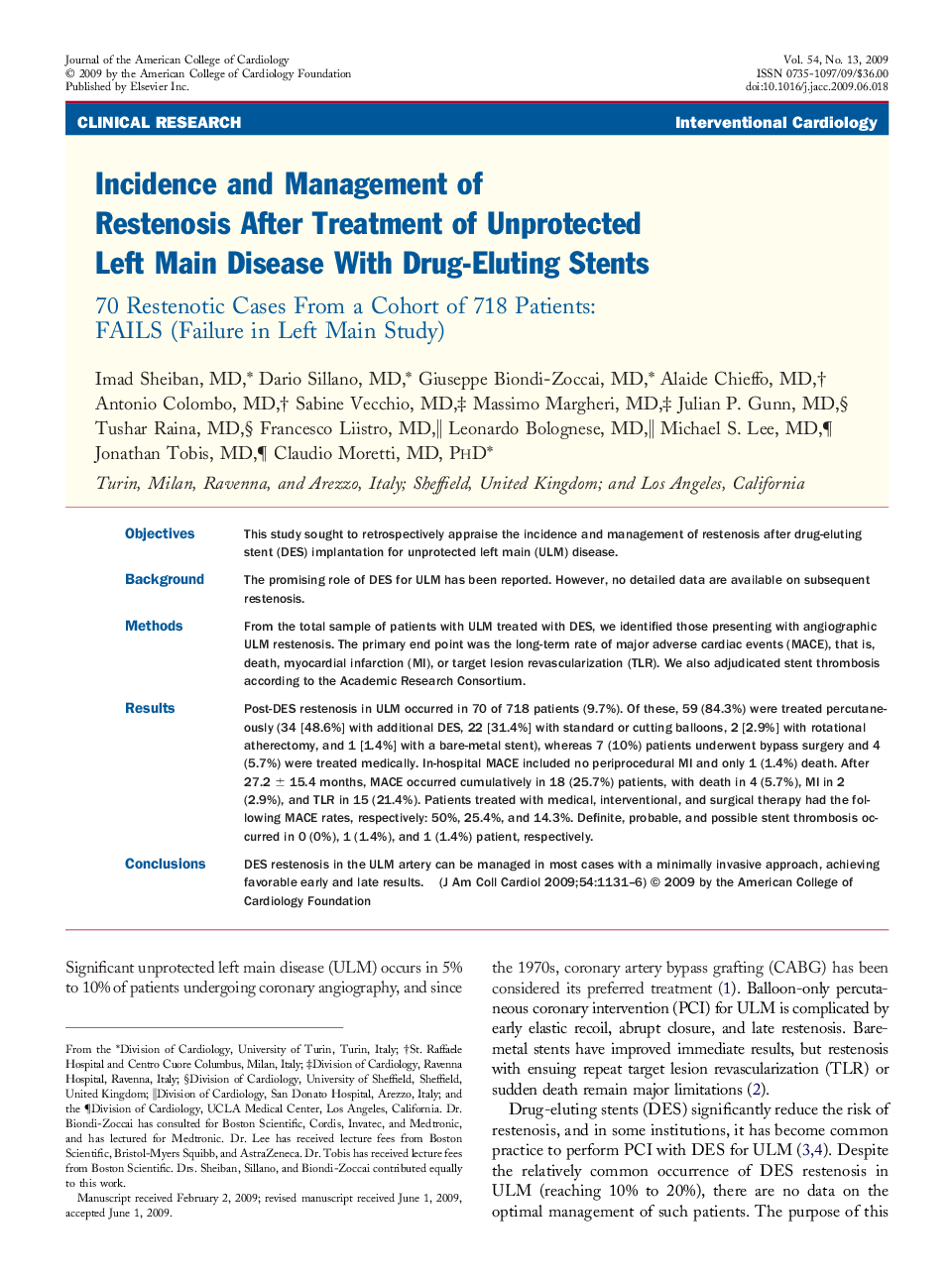| Article ID | Journal | Published Year | Pages | File Type |
|---|---|---|---|---|
| 2950897 | Journal of the American College of Cardiology | 2009 | 6 Pages |
ObjectivesThis study sought to retrospectively appraise the incidence and management of restenosis after drug-eluting stent (DES) implantation for unprotected left main (ULM) disease.BackgroundThe promising role of DES for ULM has been reported. However, no detailed data are available on subsequent restenosis.MethodsFrom the total sample of patients with ULM treated with DES, we identified those presenting with angiographic ULM restenosis. The primary end point was the long-term rate of major adverse cardiac events (MACE), that is, death, myocardial infarction (MI), or target lesion revascularization (TLR). We also adjudicated stent thrombosis according to the Academic Research Consortium.ResultsPost-DES restenosis in ULM occurred in 70 of 718 patients (9.7%). Of these, 59 (84.3%) were treated percutaneously (34 [48.6%] with additional DES, 22 [31.4%] with standard or cutting balloons, 2 [2.9%] with rotational atherectomy, and 1 [1.4%] with a bare-metal stent), whereas 7 (10%) patients underwent bypass surgery and 4 (5.7%) were treated medically. In-hospital MACE included no periprocedural MI and only 1 (1.4%) death. After 27.2 ± 15.4 months, MACE occurred cumulatively in 18 (25.7%) patients, with death in 4 (5.7%), MI in 2 (2.9%), and TLR in 15 (21.4%). Patients treated with medical, interventional, and surgical therapy had the following MACE rates, respectively: 50%, 25.4%, and 14.3%. Definite, probable, and possible stent thrombosis occurred in 0 (0%), 1 (1.4%), and 1 (1.4%) patient, respectively.ConclusionsDES restenosis in the ULM artery can be managed in most cases with a minimally invasive approach, achieving favorable early and late results.
